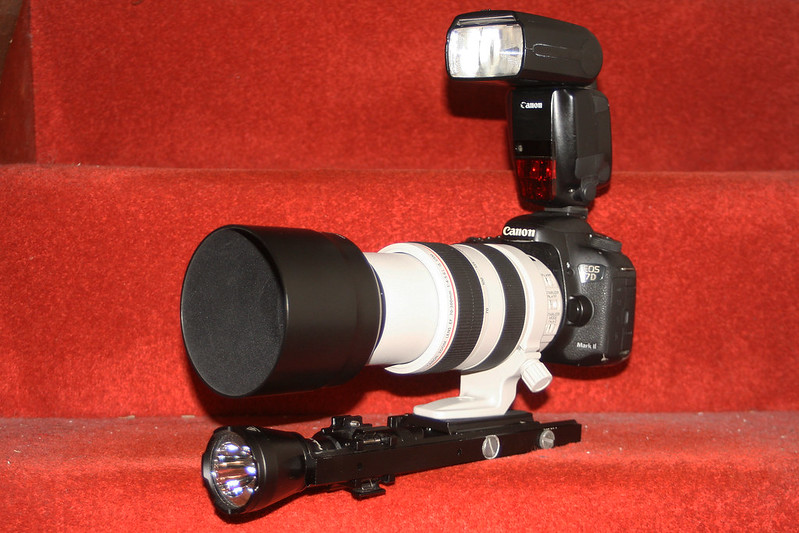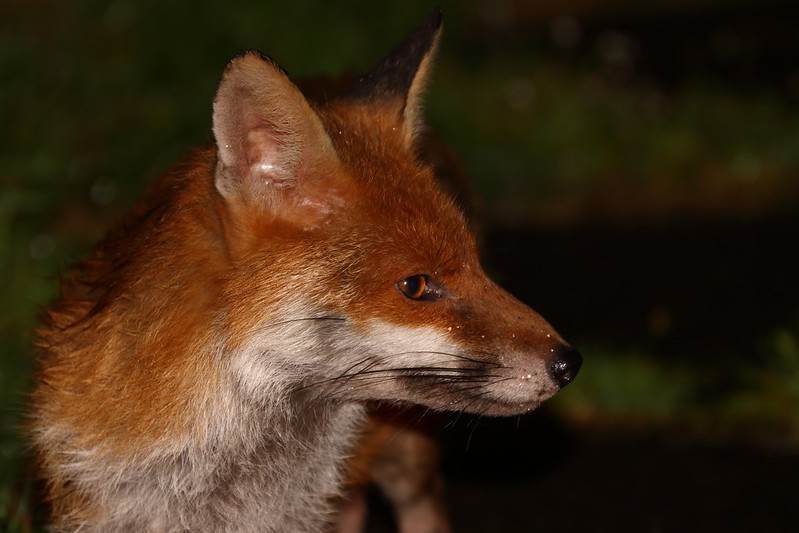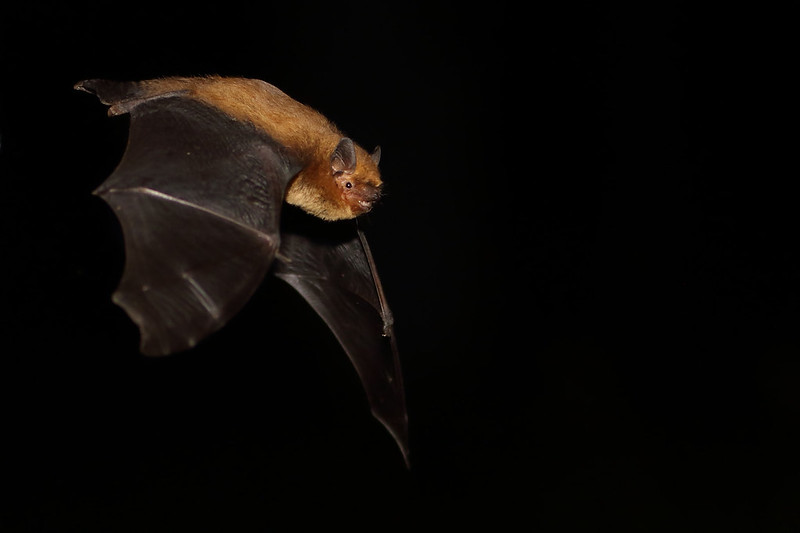I have the opportunity to go shoot some Badgers and Foxes, well foxes are near to home as we have a den near me and they are reasonably tame, they will come near for food.
The thing is with them being so unpredictable long exposure is out of the question, my Panasonic has a hand held night time setting but in honesty it's useless, a lot of frames taken over time still means poor photo with movement.
So what I need to know, is flash the answer for animals at night, and how do you select a decent flash gun.
Also we have a bat roost in the house next to me but I don't know what the law is on photographing bats, I don't want to light up the area as it might cause problems for them.
Night time photography.
- Mooshie1956
- Posts: 1708
- Joined: Wed 01 Jun 2011, 11:46 am
- Location: Manchester
Night time photography.
My Flickr https://www.flickr.com/photos/mooshie1956/
Panny G80 12-60 Lens
Panny 100-400 Lens
Olympus 60 Macro Lens
Panny G80 12-60 Lens
Panny 100-400 Lens
Olympus 60 Macro Lens
Re: Night time photography.
I can't help, but while there may be one or two on here who have attempted similar subjects, I'd suggest that you'd be more likely to find people with the relevant experience to be able to advise you, on a nature photography forum.
- speedbird2639
- Posts: 1350
- Joined: Wed 13 Jul 2011, 11:35 am
Re: Night time photography.
There was an interview with Kyle Moore on Springwatch last night (Tues). He doesn't given any secrets away on his website (or in the interview) but it might be of interest to you.
This is the episode - there doesn't seem to be a link to just the segment about his fox photography.
This is the episode - there doesn't seem to be a link to just the segment about his fox photography.
- Pen Pusher
- Posts: 7140
- Joined: Sun 31 Aug 2008, 6:34 pm
- Location: St Ives, Cambs
Re: Night time photography.
Google can't help either as it only has about 5,810,000 results for photographing wildlife at night.
Brian
Brian
- Mooshie1956
- Posts: 1708
- Joined: Wed 01 Jun 2011, 11:46 am
- Location: Manchester
Re: Night time photography.
Thanks for the replies guys, I see some wonderful shots of nature at night so plenty of people must do it, but try to find any help and advice and it becomes slim pickings ( no offence to those here as it's an aviation forum). Trawling the net last night, I think I'll leave the bats alone, it looks like it's a criminal offence to disturb them with a possible 6 months imprisonment. So I'll play safe and just enjoy watching them with the Mk1 eyeball. I've also logged it with the bat conservation trust.
My Flickr https://www.flickr.com/photos/mooshie1956/
Panny G80 12-60 Lens
Panny 100-400 Lens
Olympus 60 Macro Lens
Panny G80 12-60 Lens
Panny 100-400 Lens
Olympus 60 Macro Lens
-
FarnboroJohn
- Posts: 3046
- Joined: Tue 28 Aug 2012, 6:57 pm
Re: Night time photography.
Hi,
Only just seen your post and I certainly sympathise with your difficulty in getting advice. You wont be surprised to learn that pros want to sell you a workshop, not give you the benefit of their experience free. I have a few thoughts and hints I've picked up here and there, so here goes.
First, kit. The basic difficulty at night is focusing: wildlife moves unpredictably so pre-focusing except for camera-trap situations is out; manual is generally too slow. Which brings the issue down to getting sufficient light onto the subject to autofocus without spooking it. I've tried passive night vision with manual focusing in the dark but its too slow and the throw out rate is prohibitive and frustrating even allowing for the zero cost associated with digital photography. Eventually I gave up and returned to visible light, creating the current rig in the picture below (the Mark 8!) - the torch has 4 stage white and two stage red and green LED illumination to choose from. It is mounted on a bit of picatinny rail and on a quick release clip so I can detach it and use it off the rig easily.
 Camera Night Rig Mark 8 by John Dixon, on Flickr
Camera Night Rig Mark 8 by John Dixon, on Flickr
Subjects where you have a lot of time (e.g. foxes coming to bait over a long period) can generally be habituated. My local ones are happy for me to move around in sight of them at a distance of yards, point a camera with a red light attached at them and then let off flash repeatedly - in return for chicken legs. I tried the system on a night drive in Scotland a week ago and although I didn't end up with any pictures I bothered to keep (because I didn't find any of my target species), using the rig with the more powerful white light on the LED torch to search for eyeshine and then illuminate targets, autofocusing, worked perfectly. Its the way forward: can't wait to try it in Africa!
Settings are something you can develop for yourself but one tip I got (I forget where) was to use negative exposure compensation on both camera and flash to reduce the effect on animals' eyes. Many nocturnal animals, particularly predators, have a reflective layer called the tapetum lucidum behind the retinal sensory cells: this reflects light back through them effectively doubling the impact of incident light, giving them great night vision but resulting in huge burn out on photos (some can end up looking like they have headlights). I started with minus a third and now use a full stop at close ranges: less or none out towards the limits of the flash's capability. Notwithstanding this, working on eyes in photoshop takes up a fair bit of my time....
 20180512 (2)_Red_Fox by John Dixon, on Flickr
20180512 (2)_Red_Fox by John Dixon, on Flickr
Regarding bats I'm a member of my local bat group and at trapping sessions where bats are caught and measured, weighed and identified in detail, I have a crack at flight photos (reckon on cropping in from very wide) on release; or sometimes the bat people will release a bat by putting it on a tree. All perfectly legal and occasionally works. It does make for late nights - I came back from one session recently to see the light strengthening in front of me as I drove home to go to bed!
 20180515 (4)_Soprano_Pipistrelle by John Dixon, on Flickr
20180515 (4)_Soprano_Pipistrelle by John Dixon, on Flickr
One bat you can have a crack at fairly easily is the Daubenton's Bat, which habitually feeds by skimming bodies of water and catching midges as well as trawling with its feet for insects/caterpillars/small fish at the surface. They are just about predictable enough along canals to get a shot: they won't much like white light but red should be OK.
Hope this helps!
Only just seen your post and I certainly sympathise with your difficulty in getting advice. You wont be surprised to learn that pros want to sell you a workshop, not give you the benefit of their experience free. I have a few thoughts and hints I've picked up here and there, so here goes.
First, kit. The basic difficulty at night is focusing: wildlife moves unpredictably so pre-focusing except for camera-trap situations is out; manual is generally too slow. Which brings the issue down to getting sufficient light onto the subject to autofocus without spooking it. I've tried passive night vision with manual focusing in the dark but its too slow and the throw out rate is prohibitive and frustrating even allowing for the zero cost associated with digital photography. Eventually I gave up and returned to visible light, creating the current rig in the picture below (the Mark 8!) - the torch has 4 stage white and two stage red and green LED illumination to choose from. It is mounted on a bit of picatinny rail and on a quick release clip so I can detach it and use it off the rig easily.
 Camera Night Rig Mark 8 by John Dixon, on Flickr
Camera Night Rig Mark 8 by John Dixon, on FlickrSubjects where you have a lot of time (e.g. foxes coming to bait over a long period) can generally be habituated. My local ones are happy for me to move around in sight of them at a distance of yards, point a camera with a red light attached at them and then let off flash repeatedly - in return for chicken legs. I tried the system on a night drive in Scotland a week ago and although I didn't end up with any pictures I bothered to keep (because I didn't find any of my target species), using the rig with the more powerful white light on the LED torch to search for eyeshine and then illuminate targets, autofocusing, worked perfectly. Its the way forward: can't wait to try it in Africa!
Settings are something you can develop for yourself but one tip I got (I forget where) was to use negative exposure compensation on both camera and flash to reduce the effect on animals' eyes. Many nocturnal animals, particularly predators, have a reflective layer called the tapetum lucidum behind the retinal sensory cells: this reflects light back through them effectively doubling the impact of incident light, giving them great night vision but resulting in huge burn out on photos (some can end up looking like they have headlights). I started with minus a third and now use a full stop at close ranges: less or none out towards the limits of the flash's capability. Notwithstanding this, working on eyes in photoshop takes up a fair bit of my time....
 20180512 (2)_Red_Fox by John Dixon, on Flickr
20180512 (2)_Red_Fox by John Dixon, on FlickrRegarding bats I'm a member of my local bat group and at trapping sessions where bats are caught and measured, weighed and identified in detail, I have a crack at flight photos (reckon on cropping in from very wide) on release; or sometimes the bat people will release a bat by putting it on a tree. All perfectly legal and occasionally works. It does make for late nights - I came back from one session recently to see the light strengthening in front of me as I drove home to go to bed!
 20180515 (4)_Soprano_Pipistrelle by John Dixon, on Flickr
20180515 (4)_Soprano_Pipistrelle by John Dixon, on FlickrOne bat you can have a crack at fairly easily is the Daubenton's Bat, which habitually feeds by skimming bodies of water and catching midges as well as trawling with its feet for insects/caterpillars/small fish at the surface. They are just about predictable enough along canals to get a shot: they won't much like white light but red should be OK.
Hope this helps!
Re: Night time photography.
Not Badgers or Fox's but some details here on an Owl shoot I did last week, pre focus and remote flash set up if you can predict where they will take the bait, one tip I used f13 to maximise focus depth of field.
http://www.fightercontrol.co.uk/forum/v ... 03#p999603
Hope this helps.
http://www.fightercontrol.co.uk/forum/v ... 03#p999603
Hope this helps.
- Brevet Cable
- Posts: 13727
- Joined: Tue 05 Mar 2013, 12:13 pm
Re: Night time photography.
Mooshie1956 wrote:Also we have a bat roost in the house next to me but I don't know what the law is on photographing bats, I don't want to light up the area as it might cause problems for them.
Whilst not that common, bats do fly during the day, not to mention that they don't seem to be too bothered by dirty-great floodlights stuck on the outside of factory buildings, etc.
Tôi chỉ đặt cái này ở đây để giữ cho người điều hành bận rộn
아직도 숨어있다
아직도 숨어있다